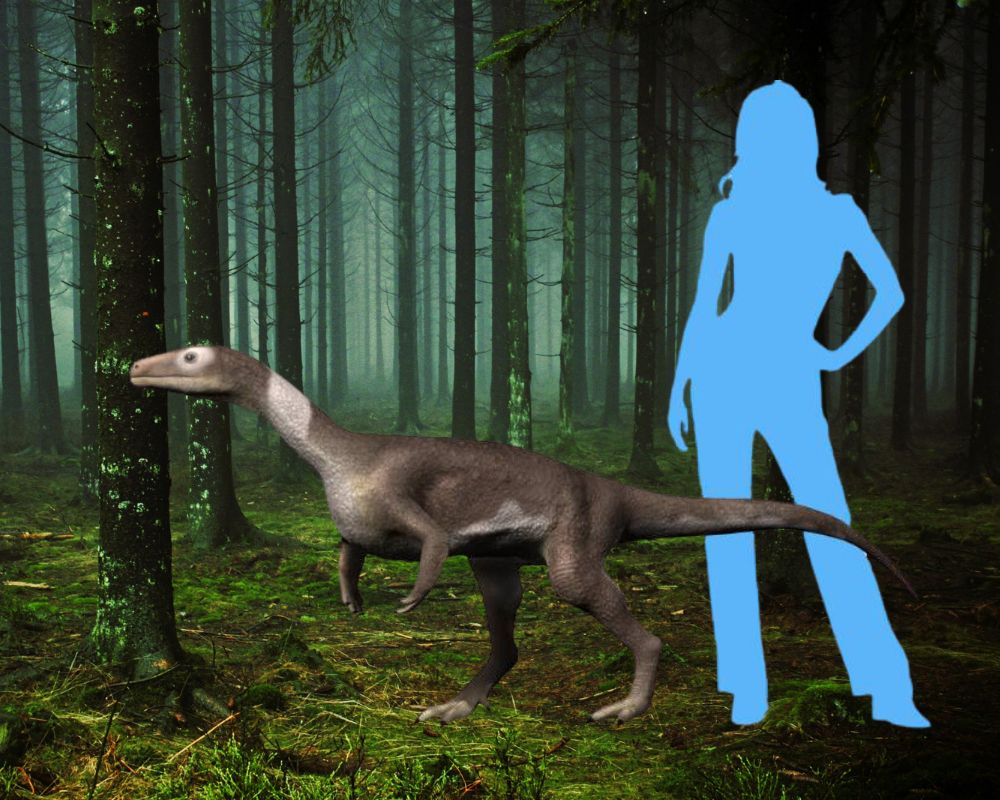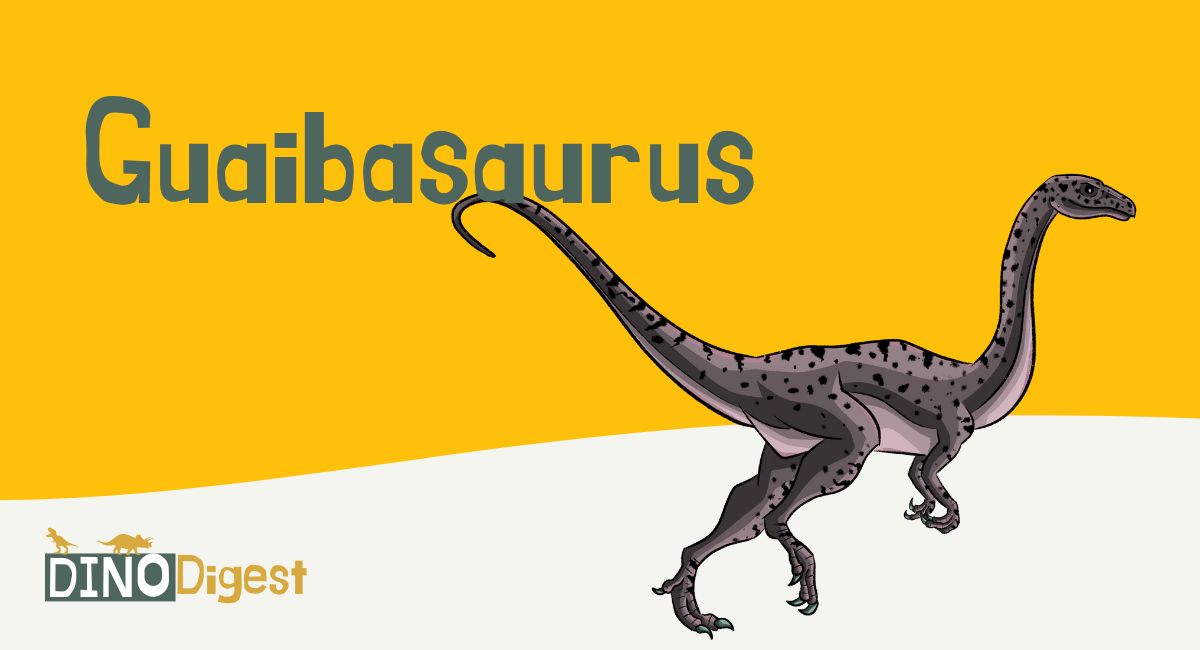The Guaibasaurus is a Triassic dinosaur who walked on two legs. It had a long neck and an incredibly long tail. The Guaibasaurus adapted to reach high into the tall foliage, much like modern-day giraffes do!
Table of Contents
Some Quick Facts about the Guaibasaurus

| Name | Guaibasaurus (meaning “Rio Guaiba Lizard”) |
| Type of dinosaur | Primitive Saurischian dinosaur |
| Territory | Forested areas of Brazil, with tall, dense foliage |
| Size | 6.6-10 feet long, 3.3-6.6 feet tall |
| Color | Dark brown |
| Interesting Characteristics | Small head with elongated, serrated teeth. On the forelimbs is a large thumb with a claw. The hind legs are long and strong |
| Diet | Herbivore or omnivore |
| Major Threats | Habitat loss, flooding, and natural disasters |
Even though the first Guaibasaurus fossil was found over twenty years ago, there’s still so much we don’t know about the mysterious Guaibasaurus. Scientists can’t even agree on whether Guaibasaurus was a herbivore or an omnivore.
Paleontologists Agnolin, Brea, Bonaparte, and Martinelli may have found two new specimens of the Guaibasaurus candelariensis, there’s still so much about this mysterious Guaibasaurus that is unknown. But here’s what we do know about this heavily debated Triassic dinosaur.
What Is the Importance of the Guaibasaurus’ Name?
The Guaibasaurus is named after the basin where it was found, called Rio Guaíba. The species name, candelariensis, is named after the city of Candelária, which is the closest city to where it was found. The Guaibasaurus was named by Jose Bonaparte, Jorge Ferigolo, and Ana Maria Ribeiro in 1999.
The Rio Guaíba basin is found in the Late Triassic Caturrita Formation of Southern Brazil. Like the Ischigualasto Formation in Argentina, the Caturrita Formation was full of dinosaur activity. There are even preserved footprints from dinosaurs who passed through the area!
Where Was the Guaibasaurus Discovered?
The Guaibasaurus was discovered in the Late Triassic Caturrita Formation of South Brazil. This is close to the Ischigualasto Formation in Argentina where the Herrerasaurus, Eoraptor, and Panphagia were found.
All three of these dinosaurs lived around the same time as the Guaibasaurus in the Late Triassic period. The Herrerasaurus is considered a sister taxon to the Guaibasaurus, making them related.
Guaibasaurus has proven to be a difficult dinosaur to study since it was first found in the 1990s. The Guaibasaurus is one of the earliest dinosaurs.
Just like the similar dino called Saturnalia, the Guaibasaurus has characteristics of both theropod and basal sauropodomorph (sauropodomorpha). The Guaibasaurus might actually prove that theropods and sauropods have a common ancestor.
What Did the Guaibasaurus Look Like?

The Guaibasaurus had a very small head, a long neck, and a long tail. They walked upright on two strong legs. The forelimbs had two large fingers and two small, useless fingers. Their thumbs were big with a claw growing out of the end.
Guaibasaurs had long teeth that were leaf and spoon-shaped. The teeth were weak, which is why many paleontologists believe that the Guaibasaurus was an herbivore and not an omnivore.
There were also gastroliths in their stomach, which are stones swallowed to help the Guaibasaurus digest tough plant fibers.
How Big Was the Guaibasaurus?
The size of the Guaibasaurus is one of the other features that is debated by paleontologists. In 2016, Gregory S. Paul studied the partial remains of each specimen. He thought the Guaibasaurus was 2 meters (6.6 feet) long and around 10 kg (22 pounds).
In 2020, paleontologists Molina-Perez and Larramendi examined the same partial remains and concluded that Guaibasaurus was 3 meters (10 feet) and 35 kg (77 pounds).
With only partial skeletons available for paleontologists to study, there are a lot of questions that might never be answered. But we do know one fascinating thing about the Guaibasaurus. One specimen was found with the vertebrae at the base of the neck turned to the side of the body.
The posture of this fossil was similar to the resting position of modern-day birds. It’s very possible that the Guaibasaurus may have curled up like a bird to stay warm when sleeping!
With every new advancement in paleontology, there’s a chance we might learn more about the mysterious Guaibasaurus.
As more fossil evidence is found, the taxa may even change, putting Guaibasaurus where it belongs on the evolutionary timeline. Until then, this mighty dinosaur will continue to be a mystery.

